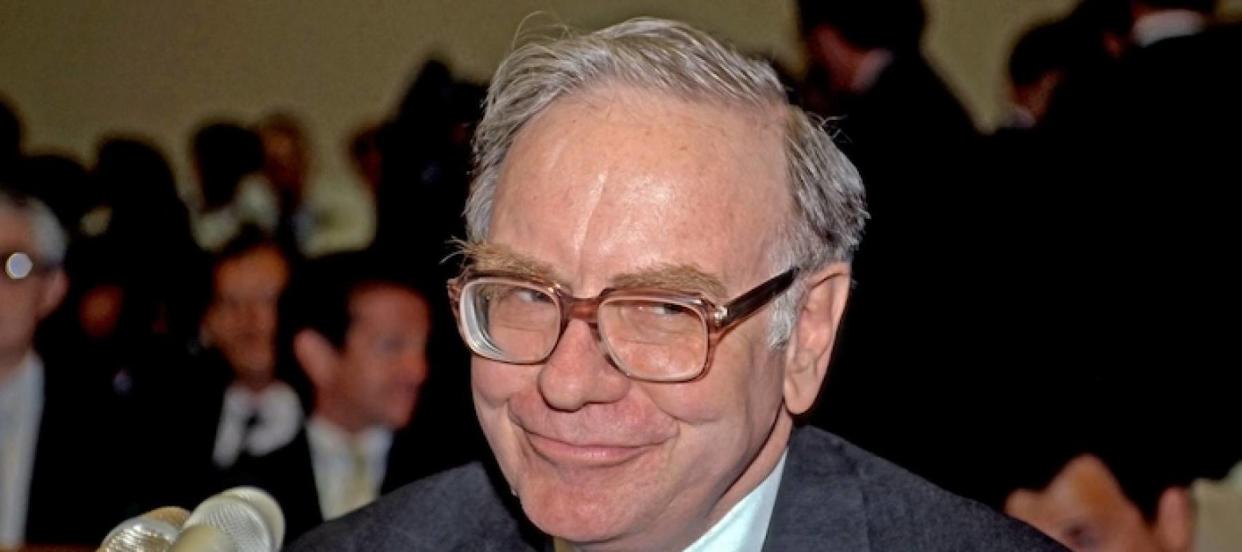‘I do believe in dividends’: Warren Buffett once shared his dividend test for maximizing profit and shareholder return — do your stocks pass?

If Warren Buffett likes dividend stocks, why doesn’t his company pay a dividend?
It’s a question that was raised by one of the attendees at the 2008 Berkshire Hathaway Annual Shareholders Meeting.
Don't miss
Commercial real estate has beaten the stock market for 25 years — but only the super rich could buy in. Here's how even ordinary investors can become the landlord of Walmart, Whole Foods or Kroger
Car insurance premiums in America are through the roof — and only getting worse. But 5 minutes could have you paying as little as $29/month
These 5 magic money moves will boost you up America's net worth ladder in 2024 — and you can complete each step within minutes. Here's how
“I do believe in dividends in a great many situations, including many of the ones at companies in which we own stock,” Buffett responded. However, he had one key test to figure out whether it makes sense for a company to pay a dividend or not.
Here’s a closer look at that test and why it’s an integral part of the Oracle of Omaha’s investment philosophy.
Buffett’s dividend test
“The test about whether to pay dividends is whether you can continue to create more than $1 of value for every dollar you retain,” Buffett said. In other words, a company should probably pay a dividend when they do not have any opportunity to reinvest retained earnings profitably.
Buffett uses See’s Candies as an example. He acquired the candy maker in 1972 for $25 million and has often called it a “dream business.” However, he believes the company doesn’t have many opportunities to reinvest in the business and create additional value, which is why he prefers taking a hefty dividend from this subsidiary.
“We like the companies in which we have investments to pay to us the money they can’t use efficiently in their own business," he says.
Berkshire Hathaway, on the other hand, can use excess capital effectively. Buffett’s investment prowess has delivered a 19.8% compounded annual return from 1965 to 2023, compared to the S&P 500’s 10.2% compounded annual return over the same period. This is why he believes Berkshire shareholders are better served when he retains all the company’s earnings and reinvests it rather than paying it out as dividends.
Applying this test to a couple of Buffett’s top dividend stocks highlights its value for investors.
Read more: Car insurance rates have spiked in the US to a stunning $2,150/year — but you can be smarter than that. Here's how you can save yourself as much as $820 annually in minutes (it's 100% free)
Apple
The iPhone maker dominates Buffett’s portfolio. Even after he sold half his stake earlier this year, it’s still his largest holding.
However, Apple isn’t much of a dividend stock. The four-year average dividend yield is just 0.57%. This is because Apple retains the majority of its earnings and reinvests it back into the business. The stock’s dividend payout ratio is just 14.92%, which means it retains nearly $85 for every $100 in earnings.
By reinvesting much of its earnings into developing new technologies, new services and new devices every year, Apple has managed to expand its earnings over the years and deliver a sizable return to stakeholders with millions of shares like Buffett.
Coca-Cola
The soft drink maker has been a part of Buffett’s portfolio for decades. It offers a better four-year average dividend yield than Apple at 2.99%. In 2024, Berkshire Hathaway is expected to receive a whopping $776 million in dividends from Coca-Cola alone. That’s nearly $2.13 million per day.
However, this hefty dividend is only possible because Coca-Cola doesn’t retain much of its earnings. As of Aug. 23, 2024, the dividend payout ratio is 76.52%. In other words, it rewards shareholders with roughly three-quarters of the earnings it generates on an annual basis.
Perhaps, like See’s Candies, Coca-Cola doesn’t see much room for reinvestment in its market. This is why the average Coca-Cola shareholder — and Buffett — can enjoy larger dividend payouts each year.
What to read next
Unlock access to 4,700+ hand-picked, single-family homes across America — and the juicy rental cash they can generate. Here's how to start with as little as $10
‘You didn’t want to risk it’: 80-year-old woman from South Carolina is looking for the safest place for her family’s $250,000 savings. Here's Dave Ramsey's response
Rich young Americans have lost confidence in the stock market — and are betting on these assets instead. Get in now for strong long-term tailwinds
This article provides information only and should not be construed as advice. It is provided without warranty of any kind.
